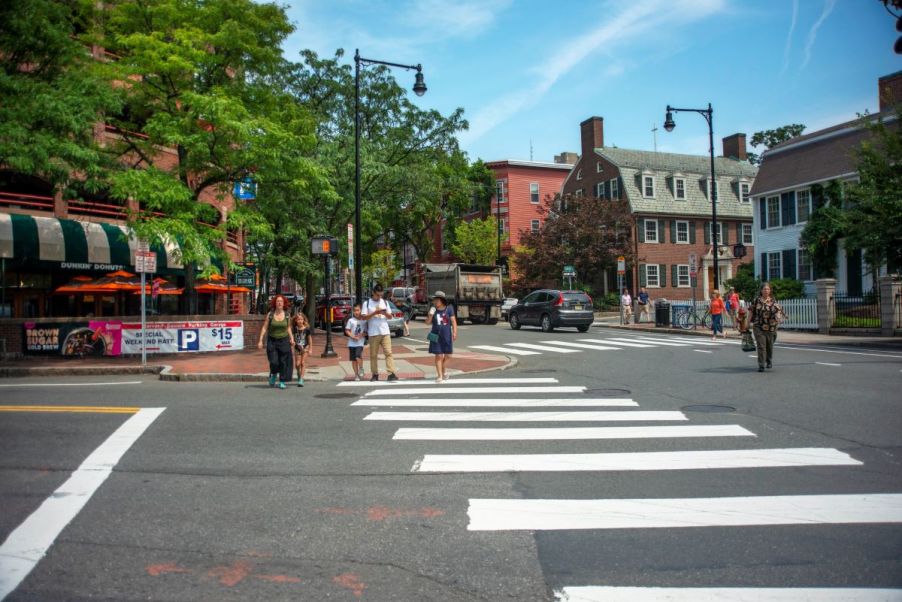
Boston Mayor Michelle Wu Calls for Pedestrian Consideration in Vehicle Safety Ratings
People often consider car safety to only mean safety for the driver and passengers. But, that line of thinking is being questioned. Boston Mayor Michelle Wu penned a letter to the National Highway Traffic Safety Administration (NHTSA) earlier this month, calling for pedestrian safety to be considered in vehicle safety ratings. Pedestrian deaths increased in 2020, even though there were fewer cars on the road, and there are rising concerns.
The NHTSA is considering pedestrian safety for the first time in 52 years

The NHTSA is, for the first time in its 52-year history, considering including pedestrians in its ratings for vehicle safety. The organization has proposed updating its rating system. Per Boston.com, “among those proposals is the potential inclusion of advanced driver-assistance system (ADAS) features, such as automatic emergency braking, blind-spot detection, and lane-keep assistance, in its evaluation of a new car’s safety.”
In 2019, new IIHS safety ratings attempted to improve pedestrian safety, but this is a first for the NHTSA.
Mayor Wu advocates for pedestrian safety

“In a letter to the NHTSA dated June 2, Wu argues that a new car should not be able to receive a five-star safety rating from the NHTSA if it does not score highly on pedestrian safety features, such as driver assistance systems, direct visibility, and speed assistance systems that limit unsafe speeds.”
Susannah Sudborough, Boston.com
It’s a sad fact that pedestrian deaths have spiked over the years, though there aren’t clear reasons why. One reason may be the advancement in bigger, faster vehicles.
Cities like Boston can have higher risks for pedestrians
In Wu’s letter to the NHTSA, she said that “in Boston, where the majority of residents’ work trips involve walking for a portion or all of their journey, we are grateful that NHTSA is exploring how to protect people outside of the vehicle as well as inside.”
Urban areas of Boston see a lot of foot traffic, so it stands to reason that with more pedestrians, there’s a higher risk for pedestrian injuries or fatalities.
Though there have been advancements in pedestrian detection technology in recent years, there are still some downsides. One is that some of these systems may be ineffective at night or during any time when visibility is low. This is unfortunate because low visibility is exactly when human error can be high and assistance systems may be needed.
Including pedestrian safety in ratings could destroy SUV and truck rankings

It’s recently been shown that trucks and SUVs are more likely to be involved in crashes and accidents with pedestrians. This is due in part to poor visibility in front of the vehicle and the overall size of the vehicle.
Boston.com shares a theory that “one reason the NHTSA might not want to consider pedestrian safety in its safety ratings is that it could greatly decrease safety ratings for SUVs and pick-up trucks.” A truck or SUV that may usually receive a five-star safety rating could possibly lose multiple stars if pedestrian safety is taken into consideration.
Will the NHTSA heed the call of Boston’s mayor? Or will they continue to give five-star safety ratings to vehicles that only protect the lives of the people inside?


